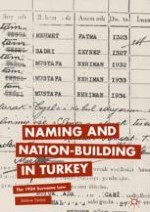2018 | OriginalPaper | Buchkapitel
2. Intellectual Precursors and Cultural Context: Turkology, Language Reform, and Surnames
verfasst von : Meltem Türköz
Erschienen in: Naming and Nation-building in Turkey
Verlag: Palgrave Macmillan US
Aktivieren Sie unsere intelligente Suche, um passende Fachinhalte oder Patente zu finden.
Wählen Sie Textabschnitte aus um mit Künstlicher Intelligenz passenden Patente zu finden. powered by
Markieren Sie Textabschnitte, um KI-gestützt weitere passende Inhalte zu finden. powered by
